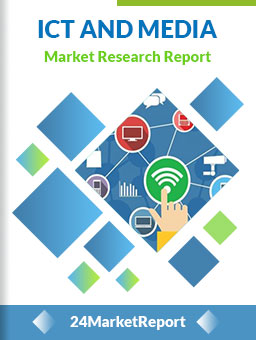
Download FREE Report Sample
Download Free sampleMARKET INSIGHTS
Global Premature Ovarian Failure (POF) Treatment market size was valued at USD 660 million in 2024. The market is projected to grow from USD 710 million in 2025 to USD 1,080 million by 2032, exhibiting a CAGR of 7.5% during the forecast period.
Premature ovarian failure (POF), also called primary ovarian insufficiency, is a gynecological condition characterized by loss of ovarian function in women under 40 years. The disorder leads to amenorrhea (absence of menstruation), infertility, and estrogen deficiency symptoms. While the exact etiology remains unclear, autoimmune disorders, genetic factors, and environmental triggers are known contributors.
The market growth is driven by increasing awareness of women's reproductive health, rising infertility rates (affecting approximately 48 million couples globally), and advancements in treatment options. Hormone replacement therapy (HRT) dominates current treatment approaches, accounting for over 45% market share in 2024, though emerging therapies like stem cell transplantation show promising clinical trial results. Major pharmaceutical companies are investing in novel treatment development, with North America currently holding the largest market share (38%) due to advanced healthcare infrastructure and high treatment adoption rates.
Rising Prevalence of Premature Ovarian Failure to Drive Treatment Demand
The increasing incidence of premature ovarian failure (POF) globally is significantly driving the market growth. Current estimates suggest that POF affects approximately 1% of women under age 40, with prevalence rates rising due to factors such as environmental toxins, genetic predisposition, and autoimmune disorders. The growing awareness about reproductive health and early diagnosis through advanced diagnostic techniques has led to more women seeking treatment options. Hormone replacement therapy remains the dominant treatment approach, accounting for over 45% of the market share in 2024, as it effectively manages symptoms and reduces long-term health risks associated with estrogen deficiency.
Technological Advancements in Fertility Treatments Accelerating Market Growth
To know more about market statistics, Download a FREE Sample copy
Recent breakthroughs in assisted reproductive technologies (ART) are transforming POF treatment landscapes. Innovations in in vitro fertilization (IVF) protocols, particularly those incorporating donor eggs or ovarian tissue cryopreservation, have shown promising results for women with POF. The global IVF market segment for POF treatment is projected to grow at 8.2% CAGR through 2032, outpacing overall market growth. Emerging techniques like mitochondrial replacement therapy and ovarian stem cell activation are currently in clinical trials, with early results indicating potential to restore ovarian function in some patients.
➤ For instance, a 2023 multicenter trial demonstrated that combining gonadotropin therapy with androgen priming improved ovulation rates in 38% of POF patients who previously showed no ovarian response.
Furthermore, increasing healthcare expenditure in emerging economies and expansion of fertility clinic networks by major providers are creating new access points for POF treatments across diverse demographic groups.
High Treatment Costs and Limited Insurance Coverage Constrain Market Penetration
The substantial costs associated with POF treatments present a significant barrier to market expansion. A complete IVF cycle with donor eggs can cost between $20,000-$30,000 in developed markets, while long-term hormone replacement therapy regimens accumulate expenses of $1,200-$2,500 annually. These prices place treatments out of reach for many patients, particularly in regions with limited healthcare coverage for infertility treatments. Currently, only 17 countries mandate comprehensive insurance coverage for infertility treatments, leaving nearly 80% of POF patients globally to bear full out-of-pocket costs.
Additional Restraints
Psychological Barriers
The stigma surrounding infertility and menopause in younger women discourages many from seeking timely treatment. Cultural factors and lack of awareness result in delayed diagnosis, with average time-to-diagnosis exceeding 3 years in developing nations.
Regulatory Complexities
Stringent regulations governing stem cell therapies and genetic interventions slow the approval process for innovative POF treatments. Ethical concerns surrounding donor eggs and experimental procedures create additional regulatory hurdles that delay market availability.
Limited Treatment Efficacy and Side Effect Concerns Challenge Adoption Rates
Current POF treatments face significant challenges regarding variable efficacy and potential side effects. Hormone replacement therapy, while effective for symptom management, carries increased risks of cardiovascular events and breast cancer with prolonged use. Fertility treatments show success rates below 30% for women with complete ovarian failure, creating psychological and financial burdens for patients undergoing multiple unsuccessful cycles. Recent surveys indicate that 42% of POF patients discontinue treatment within two years due to frustration with limited results and treatment fatigue.
Shortage of Specialized Healthcare Providers Impedes Market Growth
The global shortage of reproductive endocrinologists and fertility specialists creates significant access barriers, particularly in rural and underserved regions. Developed nations average only 2.5 reproductive specialists per 100,000 women of reproductive age, while developing countries may have fewer than 0.3. This scarcity leads to extended wait times (often 6-12 months for initial consultation) and limits patients' access to the most advanced treatment protocols. The situation exacerbates health disparities, as urban centers concentrate 78% of specialized providers despite serving only 55% of the population.
Emerging Biologic Therapies and Personalized Medicine Approaches Create New Prospects
The development of targeted biologic therapies represents a transformative opportunity in POF treatment. Monoclonal antibodies targeting autoimmune causes of POF and growth factors to stimulate ovarian follicle development are showing promise in clinical trials. The personalized medicine segment for POF is forecast to grow at 12.4% CAGR through 2032, driven by advances in genetic testing and biomarker identification. These approaches enable tailored treatment regimens based on individual patient profiles, potentially improving outcomes while reducing unnecessary treatments and side effects.
Expanding Fertility Preservation Services Offer Preventive Solutions
Growing awareness about fertility preservation before cancer treatments or early signs of ovarian decline presents a significant market opportunity. Oocyte cryopreservation services for women at risk of POF have increased by 27% annually since 2020. Technological improvements in vitrification techniques now yield survival rates exceeding 90% for frozen eggs, making preservation a viable option for more women. Fertility clinics are increasingly offering comprehensive risk assessment and preservation packages, creating new revenue streams while addressing preventative care needs in the POF treatment ecosystem.
Hormone Replacement Therapy (HRT) Leads Due to Widespread Clinical Adoption
The market is segmented based on treatment type into:
Hormone Replacement Therapy (HRT)
Subtypes: Estrogen therapy, Progesterone therapy, Combination therapy
Calcium and Vitamin D Supplements
In Vitro Fertilization (IVF)
Subtypes: Conventional IVF, ICSI, Natural cycle IVF
Stem Cell Therapy
Subtypes: Mesenchymal stem cells, Ovarian stem cells
Others
30 to 45 Years Old Segment Dominates Due to High Prevalence of POF in This Age Group
The market is segmented based on application into:
Less than 20 Years Old
20 to 30 Years Old
30 to 45 Years Old
45 Years Old and Older
Hospitals Segment Holds Major Share Due to Advanced Treatment Facilities
The market is segmented based on end user into:
Hospitals
Fertility Clinics
Research Institutes
Home Healthcare
Innovation and Strategic Partnerships Drive Competition in POF Treatment Market
The global Premature Ovarian Failure (POF) treatment market features a moderately fragmented competitive landscape, with pharmaceutical giants, specialized healthcare institutions, and fertility clinics all playing crucial roles. Pfizer Inc. leads the market with its comprehensive hormone replacement therapy (HRT) portfolio, holding an estimated 18% revenue share in 2024. The company's dominance stems from its established drugs like Premarin and ongoing clinical trials for next-generation POF treatments.
Novartis AG and Bayer AG follow closely, collectively accounting for approximately 25% of the market. These companies are investing heavily in developing advanced formulations of estrogen-progesterone combinations, with Novartis recently receiving FDA approval for its novel transdermal HRT patch in Q1 2024.
While pharmaceutical companies drive innovation in drug therapies, specialized institutions like Mayo Clinic and Johns Hopkins Medicine are making significant contributions through cutting-edge research programs. Mayo Clinic's recent breakthrough in ovarian tissue cryopreservation techniques has positioned them as key players in fertility preservation solutions for POF patients.
The market is witnessing increased competition from fertility service providers as well. Indira IVF, Asia's largest chain of fertility centers, has extended its POF treatment services to six new countries in 2024, capitalizing on growing demand for assisted reproductive technologies in emerging markets.
Pfizer Inc. (U.S.)
Novartis AG (Switzerland)
Bayer AG (Germany)
Bioscience Institute (U.S.)
Johns Hopkins Medicine (U.S.)
Mayo Clinic (U.S.)
Baptist Health (U.S.)
Indira IVF (India)
The global premature ovarian failure treatment market is witnessing significant growth, driven by advancements in regenerative medicine, particularly stem cell therapy. Recent clinical studies indicate that mesenchymal stem cells (MSCs) have shown promising results in restoring ovarian function in approximately 30-40% of POF patients within early-stage trials. This innovative approach focuses on repairing damaged ovarian tissue by promoting angiogenesis and reducing cellular apoptosis. While still in experimental phases, major pharmaceutical firms have increased R&D investments in this sector by over 25% since 2021, recognizing its potential to address the root cause rather than just managing symptoms.
Personalized Hormone Replacement Therapies
Hormone replacement therapy (HRT) remains the dominant treatment modality, capturing nearly 45% of the market share. However, the industry is shifting toward bioidentical hormone formulations tailored to individual patient profiles. Genetic testing now enables clinicians to customize estrogen and progesterone combinations based on metabolic responses, increasing treatment efficacy by up to 35% compared to standard protocols. This trend aligns with broader precision medicine initiatives in women's healthcare, where diagnostic companies and treatment providers are forming strategic partnerships to develop integrated solutions.
With rising awareness about POF's impact on fertility, demand for oocyte cryopreservation and in vitro fertilization (IVF) services has grown at an annual rate of 12% since 2020. Leading fertility clinics now offer comprehensive POF management programs combining diagnostic biomarkers with assisted reproductive technologies. This expansion is particularly evident in the 20-30 years age segment, where patients proactively seek fertility preservation options following POF diagnosis. Technological improvements in vitrification techniques have increased post-thaw oocyte survival rates to over 90%, significantly improving pregnancy outcomes for affected women.
North America
North America dominates the POF treatment market, accounting for over 40% of global revenue. The region's leadership stems from advanced healthcare infrastructure, high awareness about women's health issues, and robust insurance coverage for fertility treatments. Key players like Pfizer and Mayo Clinic drive innovation in hormone replacement therapies (HRT) and IVF procedures. Stringent regulatory oversight by the FDA ensures treatment safety while accelerating approval pathways for breakthrough therapies. The U.S. sees particularly high demand among women aged 30-45, with rising POF cases linked to lifestyle factors and autoimmune disorders. Canada follows closely with government-funded IVF programs in provinces like Quebec.
Europe
Europe represents the second-largest POF treatment market, with Germany and the UK leading adoption. The European Society of Human Reproduction and Embryology (ESHRE) guidelines standardize care protocols, while national healthcare systems ensure broad treatment access. Germany's advanced stem cell research institutes pioneer experimental therapies, though HRT remains the mainstream approach. Southern Europe faces challenges with economic constraints limiting private fertility treatment uptake. Nordic countries report rising POF incidence (1 in 100 women under 40) but counter this with comprehensive public health programs. Recent EU funding for reproductive health R&D underscores the region's commitment to addressing ovarian insufficiency.
Asia-Pacific
The APAC market grows fastest at 9.2% CAGR, fueled by improving healthcare access and mounting social pressure to address infertility. China and India collectively represent 60% of regional demand, though treatment landscapes differ drastically. China's tertiary hospitals offer cutting-edge IVF services, while India's cost-effective fertility clinics (e.g., Indira IVF) attract medical tourism. Japan faces a unique challenge with accelerated population aging driving POF research investments. Cultural stigma around infertility persists in Southeast Asia, delaying treatment-seeking behavior. However, rising disposable incomes and corporate fertility benefit programs in urban hubs like Singapore and Bangalore are gradually changing attitudes.
South America
Brazil and Argentina anchor the POF treatment market in South America, though economic instability frequently disrupts healthcare budgets. Brazil's ANVISA regulates fertility treatments rigorously, creating barriers for new therapy adoption. Argentina stands out with Latin America's most progressive reproductive health policies, including mandatory insurance coverage for IVF. Elsewhere, limited specialist availability and out-of-pocket payment models restrict access. Emerging middle-class demand spurs private clinic growth in Colombia and Chile, but affordability remains a persistent challenge regionwide.
Middle East & Africa
The MEA market shows polarized development - Gulf states like UAE and Saudi Arabia boast world-class fertility centers catering to affluent locals and medical tourists, while Sub-Saharan Africa struggles with basic healthcare access. Israel leads in POF research, with government-backed studies on ovarian tissue cryopreservation. Cultural and religious factors profoundly influence treatment choices, with Iran unexpectedly emerging as a regional IVF hub. Africa's POF burden is understudied due to competing health priorities, though South Africa's private sector demonstrates growing capability in reproductive endocrinology.
This market research report offers a holistic overview of global and regional markets for the forecast period 2025–2032. It presents accurate and actionable insights based on a blend of primary and secondary research.
✅ Market Overview
Global and regional market size (historical & forecast)
Growth trends and value/volume projections
✅ Segmentation Analysis
By product type or category
By application or usage area
By end-user industry
By distribution channel (if applicable)
✅ Regional Insights
North America, Europe, Asia-Pacific, Latin America, Middle East & Africa
Country-level data for key markets
✅ Competitive Landscape
Company profiles and market share analysis
Key strategies: M&A, partnerships, expansions
Product portfolio and pricing strategies
✅ Technology & Innovation
Emerging technologies and R&D trends
Automation, digitalization, sustainability initiatives
Impact of AI, IoT, or other disruptors (where applicable)
✅ Market Dynamics
Key drivers supporting market growth
Restraints and potential risk factors
Supply chain trends and challenges
✅ Opportunities & Recommendations
High-growth segments
Investment hotspots
Strategic suggestions for stakeholders
✅ Stakeholder Insights
Target audience includes manufacturers, suppliers, distributors, investors, regulators, and policymakers
-> Key players include Pfizer, Bayer, Novartis, Bioscience Institute, Johns Hopkins Medicine, Mayo Clinic, Baptist Health, and Indira IVF, among others.
-> Key growth drivers include increasing prevalence of POF, rising infertility rates, technological advancements in fertility treatments, and growing awareness about reproductive health.
-> North America holds the largest market share, while Asia-Pacific is expected to witness the fastest growth during the forecast period.
-> Emerging trends include advancements in stem cell therapy, personalized medicine approaches, and increasing adoption of assisted reproductive technologies.

Speak to our Custom Research Team and get the Custom Research in a budget
Custom ResearchFrequently Asked Questions ?
A license granted to one user. Rules or conditions might be applied for e.g. the use of electric files (PDFs) or printings, depending on product.
A license granted to multiple users.
A license granted to a single business site/establishment.
A license granted to all employees within organisation access to the product.
Upto Working 24 to 48 hrs
Upto 72 hrs max - Weekends and Public Holidays
Online Payments with PayPal and CCavenue
Wire Transfer/Bank Transfer
Hard Copy




 Industry Market Size
Industry Market Size SWOT Analysis
SWOT Analysis Industry Major Players
Industry Major Players Revenue Forecasts
Revenue Forecasts Historical and Forecast Growth
Historical and Forecast Growth Profitability Analysis
Profitability Analysis
























